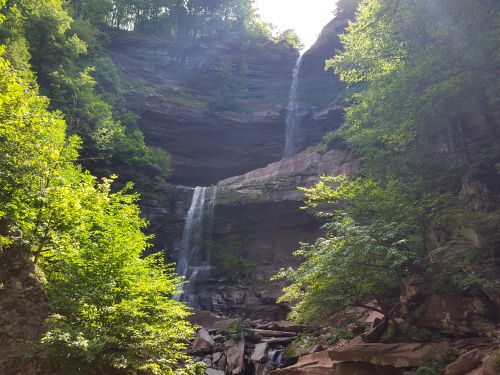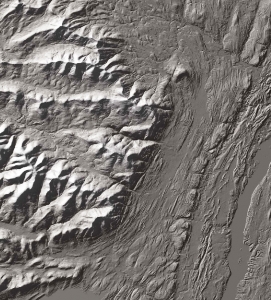Those old bluestone sidewalks 10-27-16
Those bluestone sidewalks
Windows Through Time
Robert Titus
July 2nd, 2009
We rarely pay sufficient attention to the very greatest emblems of our history, in time to save them from destruction. The old covered bridges were replaced by modern spans and, not until only a few were left, did anyone bother to care. By then it was nearly too late, but a few were saved and are still to be seen. All across the land, beautiful old barns have been left to decay and fall down. Today you can actually see signs along the highways, posted by people who wish to buy old barns and tear them down to salvage and sell their wood. It’s such a shame. I fear that nobody will do anything until just a handful of barns are left.
There’s another emblem of the past that I seem to find myself alone in worrying about. That is the bluestone sidewalk. We see them all over the place, but they are being replaced by cement and that has been the case for a long time. Many are still there, but for how long?

Old bluestone sidewalk
If you care to take notice, they can be seen. There are several of them in my town of Freehold. I still see some in Oneonta where I teach. The city of Hudson has some and so on. They are old; they were installed a long time ago, and they are showing their age.
But just what is bluestone? That, of course, is something any local geologist will know about, and I am no exception. Bluestone is a type of sandstone and thus (guess what?) it is composed of sand. It is quartz sand as a matter of fact. So, where did all that sand come from?
Much of Catskill sandstone was originally formed as sediment in the channels of ancient rivers. There were a lot of rivers around here during the Devonian time period and so there is a lot of sandstone. When it has just the right amount of the mineral called feldspar in it, then the sandstone takes on a vaguely blue appearance and, presto, it is bluestone.
Those Devonian age rivers sometimes had powerful flows of water within them. These currents swept along large masses of sand. We are probably talking about Devonian age flood events. At the peak of a flood, the currents were powerful and dirty with sand and silt. But floods don’t last forever; they do abate. As the currents, once again, slowed down, they could no longer continue to transport their load of sand. Most of it had to be deposited. At exactly the right current speed, sand is deposited in thin, very flat sheets. These strata are the ancestors of sidewalks.
The horizontally laminated rock that results is well-suited for splitting. Long ago quarrymen learned how to do this, and they became very skilled at splitting and cutting the rock into slabs just the right size to make sidewalks. It was backbreaking work; I hate to think how hard it must have been. But, the pay was pretty good by the standards of the 19th Century, and so many were attracted to the work. Good bluestone quarries sprang up in the Hudson Valley, west of the river. Then more were opened up in the eastern Catskills. You can still see the old, now abandoned quarries; they are common

View of an old bluestone quarry
The earliest quarries eventually played out and were abandoned. The industry has slowly migrated westward across the Catskills, and now it’s centered in the vicinity of the Delaware River. People still produce very good bluestone out there.
The rock is found all over the world, but the best bluestone comes from the Catskills. Our stone is enormously resistant to weathering, and that is why it made such good sidewalks. The rock doesn’t become very slippery when wet and that helps too. Blocks of it, cut a century ago, have had people walking across them for all that time and they often show little wear from all the abuse. But, they are getting old. It’s the corners that go first. Weathering works in from both sides of a corner and gradually decomposes it. Then, commonly, stresses build up within the stone, resulting in its cracking. That hurries things along quite a bit.
So, sadly, town fathers look at their old sidewalks, and decide they have to go. They come to be replaced, usually by cheaper cement. There is probably little that can be done to stop or even slow this, but it is sad. Still, we should appreciate this fine old stone, and we owe it to ourselves to be a little more aware of these sidewalks when we see them. They are part of our heritage and a very important part of it. You can tell your grandchildren about them. And tell me too, if there are good bluestone sidewalks near you. Contact the author at titusr@hartwick.edu






